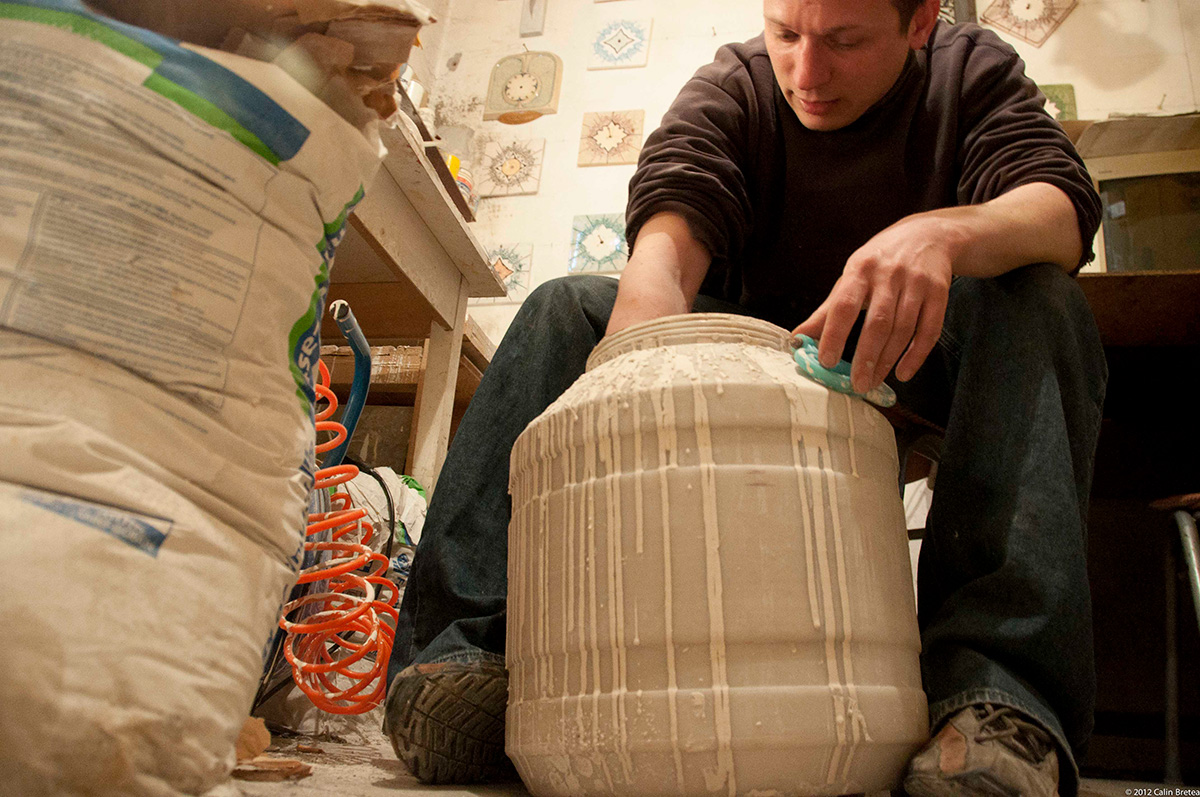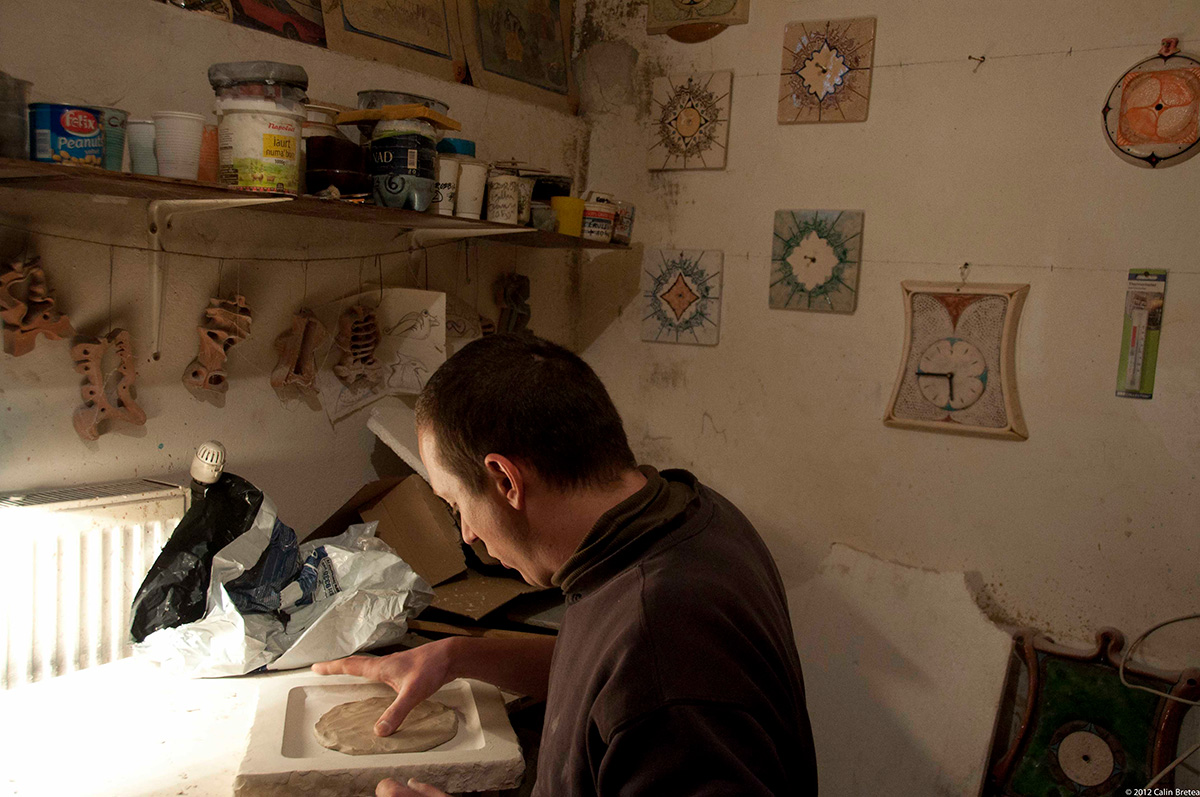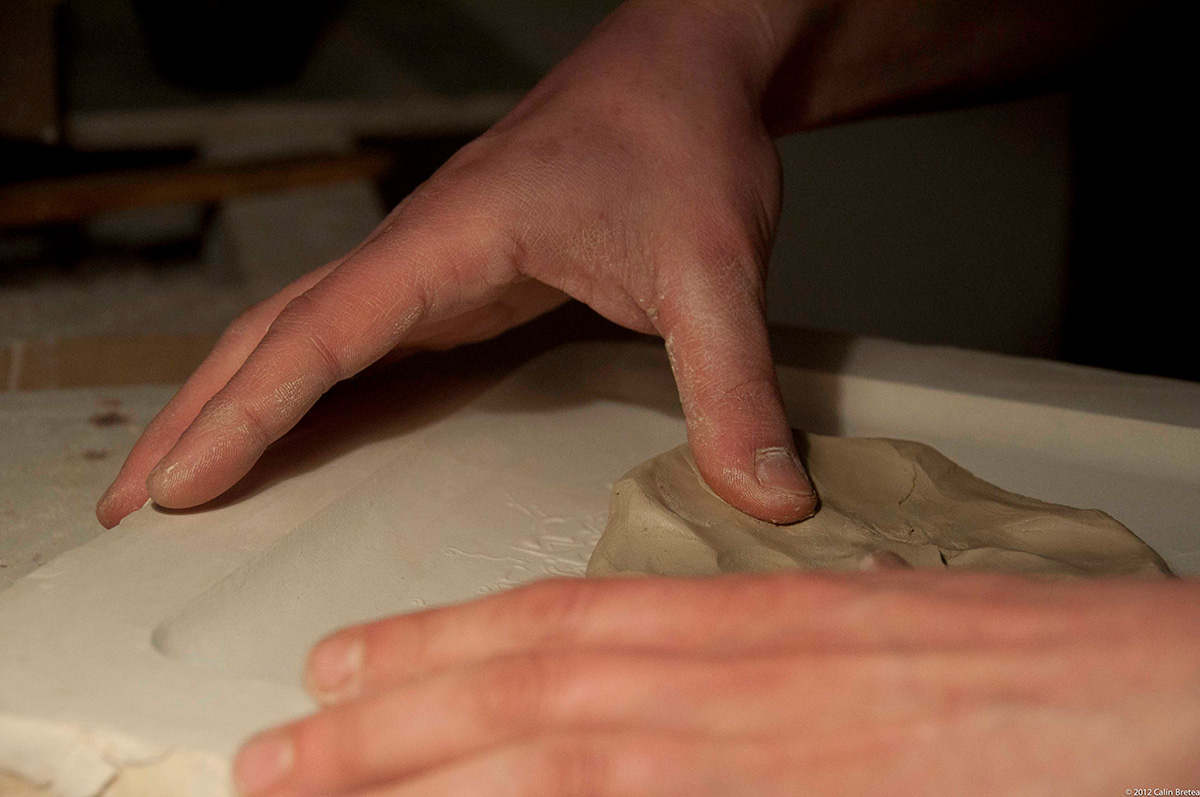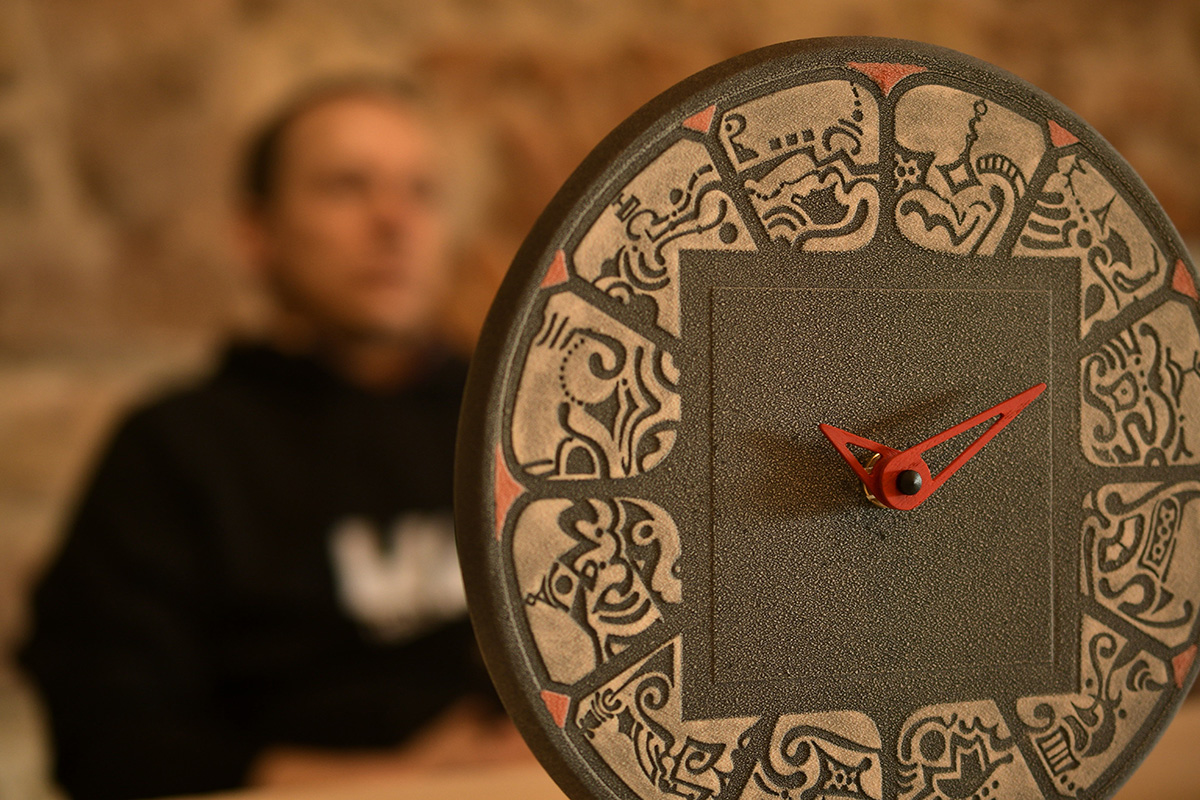
The paradox of this creator of ceramic wall clocks lies in his constant pursuit of time. Close friends see in Nicolae a resemblance to the character of the White Rabbit in Alice in Wonderland, always on the run and running out of time.
Nicolae discovered his artistic inclination at the age of 4, when he used to decorate with abstract motifs the drawing of vases sketched by his mother for his amusement. Later, meeting some ceramists and teachers from the Art High School such as Eugenia Pop or Gavril Zmicală gave him a clear impetus in the direction of ceramics, his passion and creations being awarded with several trophies at the national fine arts olympiads. For almost two decades, although he has been working in various visual disciplines, his work has been centered around the ceramic wall clock, which has gone beyond its strictly functional valence to become, as the case may be, an artistic and design object. Its products have reached three continents and could go even further if Time were to be more lenient with the “clockmaker-ceramist”.

When did you first think or set out to become a ceramist?
In 8th grade, around the age of 14.
How did you feel when you first participated in a ceramics exhibition?
Delighted to be able to exhibit my work and curious about the viewers’ reactions.
What do you prefer to be called, ceramist, potter or visual artist and why?
Visual artist, besides ceramics I also do painting and graphics.
What does ceramics mean to you?
It’s an ancient human activity, but it’s still relevant today, with the same combination of utilitarian and aesthetic aspects.

What do you think is the most important quality of ceramic art?
The useful/functional symbiosis with aesthetics and the relative durability achieved by firing the ceramic product.
What are your sources of inspiration?
Nature, geometry, primitive, decorative and traditional art, the art of other artists, architecture.
Which ceramic materials do you like to use most and why?
The white ceramic table allows many different color schemes.
Do you use more industrial techniques and technologies dedicated to ceramics or do you work more manually? What do you think are their pros and cons?
Both. The industrial ones help to streamline some phases of work, while the manual ones contribute to the uniqueness and personalization of the work.

Can you give us an example of archaic pottery that you particularly appreciate and what draws you to it?
Inuit ceramics, together with Maori and Cucuteni ceramics, have many common elements that I appreciate: pronounced geometric and chromatic character, with strong contrasts, balanced relationship between the whole and details, decorative and figurative-symbolic.
What do you think about the pottery of the Cucuteni-Tripole civilization?
An archaic ceramic art of high quality, with strong symbolism and effective stylization, akin to similar manifestations of the same period in other geographical areas.
What do you think are three of the most important ceramic events in the world?
Mino International Ceramics Festival in Mino, Japan, Aberystwyth International Ceramics Festival in Aberystwyth, UK and Gyeonggi-do International Ceramics Biennale in Gyeonggi-do, South Korea.
Which ceramics event or gallery do you dream of exhibiting at and why?
At the International Ceramics Festival in Mino, Japan, it’s the most prestigious in the world, with exhibitions to a large public.
What do you think are three of the most important qualities a visual artist should have?
Patience, hard work and curiosity.
What do you think about Romanian ceramics?
It is evolving positively and with a lot of diversity, it needs more promotion and public awareness.

What do you think are the needs of the ceramic artist?
Comfortable everyday living and getting out into nature to be able to carry out the creative process efficiently.
What would you recommend to younger ceramists to help them better orient their career?
To study the work of as many other artists as possible and to produce the objects that are most pleasing to them and to the public, and to seek their feedback.
Which ceramic artist or artists have inspired you throughout your career or are a reference?
Eugenia Pop, Cornel and Arina Ailincăi, Gavril Zmicală.
Interview by Letiția Câmpan.
